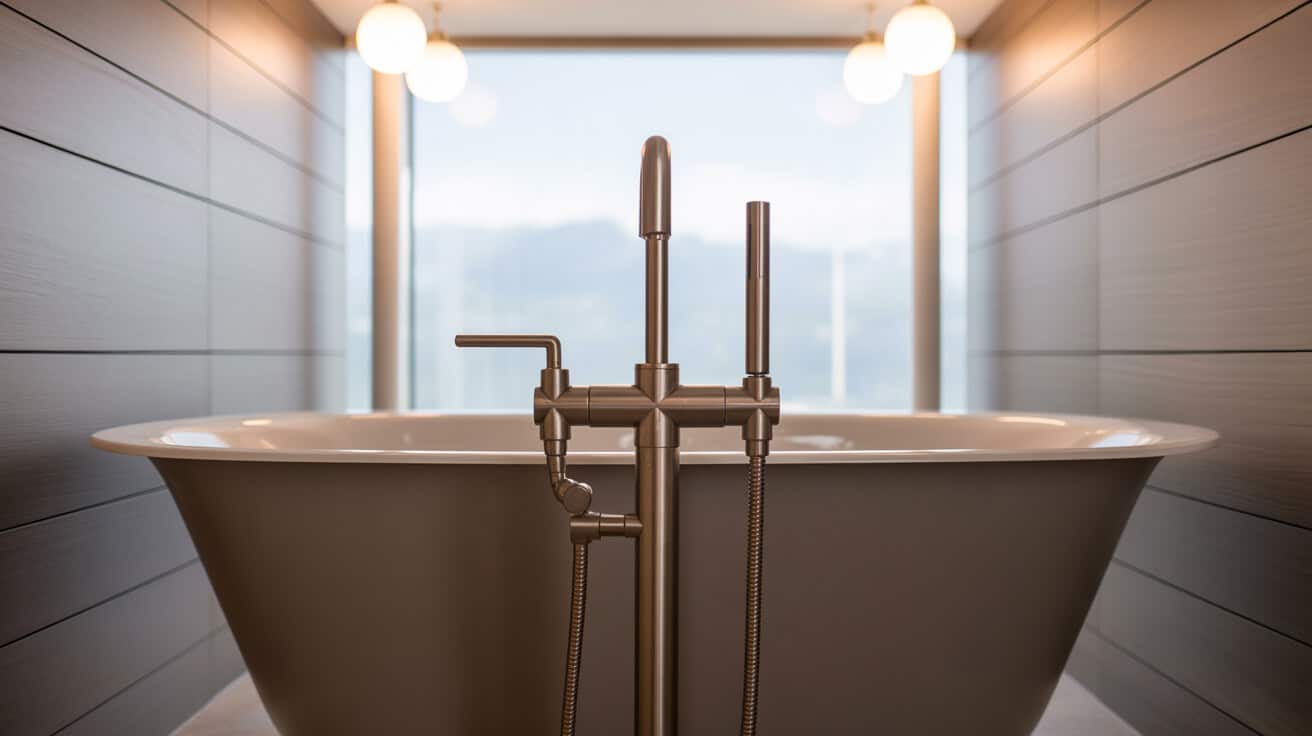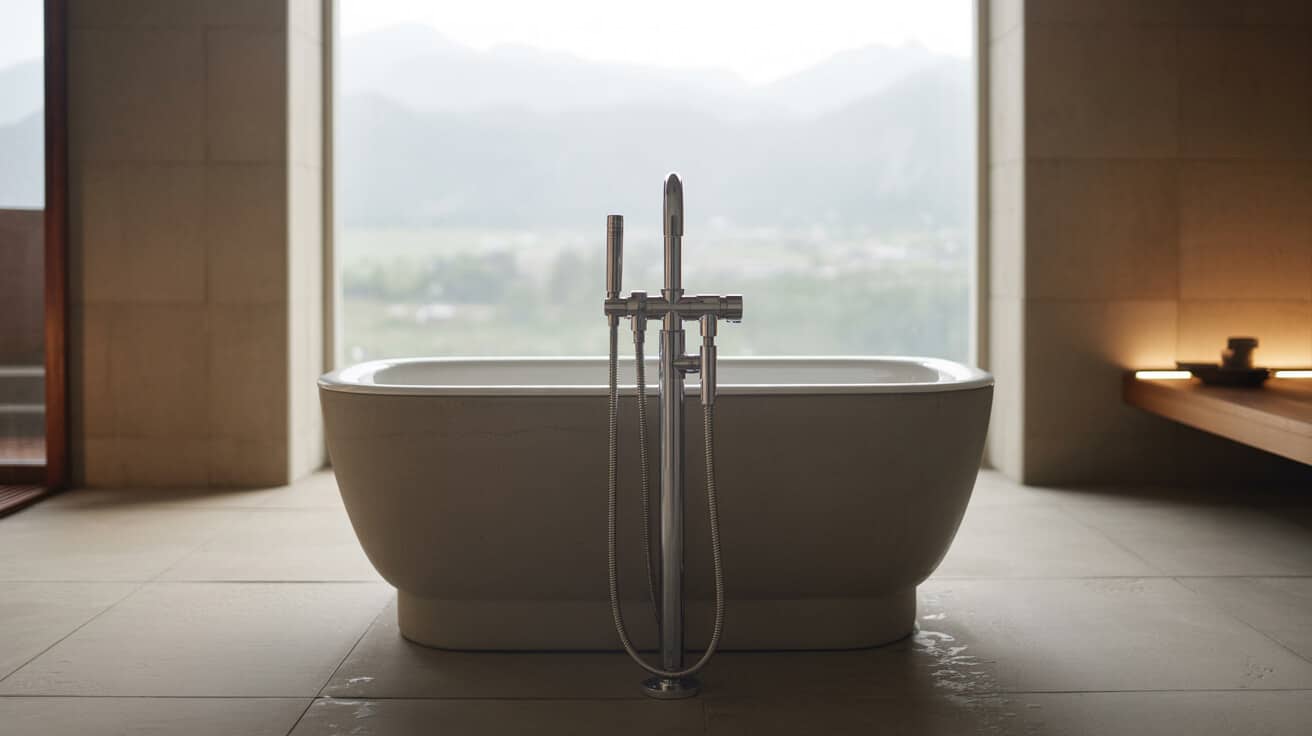Property managers and homeowners increasingly recognise that thermal comfort and scald prevention are neither luxuries nor afterthoughts: they are infrastructure priorities woven into compliance and reputation. The narrative of TMV installation involves technical scrutiny, regulatory intelligence, and forethought about how families, tenants, and institutions interact with water every day. In practice, the reach of effective mixing valve installation is measured by how rarely you are forced to think about it—and by the confidence you have in your company’s commitment to every detail that keeps people safe.
Lead
A thermostatic mixing valve installation is the procedure of incorporating a mechanical device within a water distribution system to maintain outgoing water temperature at a predetermined, stable level regardless of variable supply conditions. These valves blend hot and cold water, using an internal thermostatic element to stabilise outlet temperature, significantly reducing the risk of scalding for occupants in settings ranging from private homes to hospitals. Proper installation requires an understanding of your property’s plumbing context, precise mechanical calibration, adherence to legal codes, and scheduled maintenance. TMV installations have become essential in buildings where water safety, regulatory audit, and user comfort converge.
Etymology or name origin
The terminology “thermostatic” joins the Greek “thermo” (heat) and “statikos” (causing to stand still), while “mixing valve” designates a valve mechanism for blending distinct water supplies. The phrase entered widespread technical use in the mid-20th century amid heightened public health attention to scald injury prevention. In professional application, it distinguishes a purpose-built device that replaces, augments, or controls water delivery at outlets, meeting evolving legal, technical, and end-user expectations.
Overview / context
Water Temperature Control in the Built Environment
Reliable water temperature control is foundational for contemporary construction, encompassing both domestic and commercial needs. Historically, children, the elderly, and those with physical impairments have faced elevated risks from temperature fluctuations in hot water supply, resulting in severe injuries. Blending devices designed by engineering firms, such as Plumbers 4U, address scald risks through mechanical consistency.
Increasing Legal and Social Expectations
National building codes and sector-specific legislation (notably in the United Kingdom, Australia, and parts of Europe) have progressively incorporated scald prevention as a non-negotiable. TMV installation is now mandated under various building regulations, particularly for new housing, rental properties, healthcare, and educational buildings. These devices mirror a cultural shift: legal minimums increasingly track public consensus that temperature safety is as vital as water purity or structural soundness.
Complexity and Specialisation in Plumbing
Modern plumbing and heating systems are increasingly complex, dominated by multi-outlet distribution, networked boosters, and digital controls. Installing thermostatic mixing valves demands assessment of pressure, flow rates, water quality, and compatibility with a variety of fittings and appliances. The ongoing maintenance and documentation, especially when managed by companies like Plumbers 4U, inform your compliance profile and the satisfaction of your occupants.

History
Origins
The drive to moderate water temperature emerged from early 20th-century injury data and the advocacy of healthcare professionals. The first mechanical blending valves were installed in institutional hospitals, often as retrofits after serious accidents. These early devices were bulky, expensive, and manually adjusted.
Industrial Emergence
By the 1970s, innovations in materials, pressure regulation, and thermostatic controls made automated blending more feasible and reliable. As building codes adapted, specifiers in education and public housing began to recommend or require TMVs at high-risk outlets such as baths and communal showers. Plumbing and heating companies began formalising specialist teams tasked with large-scale compliance upgrades.
Contemporary Evolution
Regulatory momentum grew in the late 20th and early 21st centuries, with codes such as the UK’s Building Regulations Part G mandating anti-scald controls for domestic baths. Approval schemes like TMV2 for domestic settings, and TMV3 for healthcare, arrived in the 2000s, accelerating adoption. The narrative expanded from accidental prevention to routine comfort, hygiene, and risk management. Today, installations often include digital job records, automatic service reminders, and audit trails—especially among professional service providers.
Concept / description
How Thermostatic Mixing Valves Work
A thermostatic mixing valve receives separate hot and cold water supplies. Inside the body, a wax capsule or bi-metallic strip expands or contracts according to the temperature of the mixed water. This movement directly moves a shuttle that adjusts the proportion of hot and cold entering the mixing chamber. If the supply temperature or pressure changes, the valve re-balances the blend to maintain a stable, pre-set temperature. Should either supply fail, the device’s fail-safe mechanism shuts off flow almost instantly—critical for preventing accidental exposure to very hot or very cold water.
Main Structural Elements
- Thermal actuator (wax element or bi-metal strip): Detects water temperature.
- Moving shuttle or piston: Dynamically blends incoming supplies.
- Check valves/non-return valves: Prevent cross-contamination.
- Strainer/sediment philtres: Minimise debris-induced malfunction.
- Adjustment mechanism: Sets the output temperature, often tamper-resistant.
- Fail-safe shutoff: Stops flow during supply interruption.
Placement and System Integration
TMVs may be point-of-use (e.g., directly beneath a sink, bath, or shower) or integrated at the manifold for multiple outlets. Site-specific installation depends on property layout and user risk profile.
Certification and Identification
Valves sold and installed in the UK display certifications such as TMV2 (domestic) or TMV3 (healthcare), along with WRAS approval confirming potable water compatibility. Plumbers 4U and other responsible contractors maintain digital records linked to these serial numbers for streamlined compliance checks.
Functionality / purpose / applications
TMVs offer real-time temperature regulation at outlets, protecting against injury while providing thermal comfort. Due to strict regulatory context and their pivotal role in risk reduction, their applications vary by property type.
Residential Applications
Most new UK homes, especially those with families or elderly occupants, require TMVs for baths, showers, and, in some cases, basin taps. This installation is not merely a recommendation; it is a routine aspect of contemporary residential fit-out, ensuring that your property offers both comfort and security.
Healthcare and Institutional Installations
TMVs are mandated in hospitals, clinics, care homes, schools, and childcare facilities. Here, the risk of scalding is both a moral and legal liability, and fail-safe function becomes paramount. Institutional TMVs (TMV3 approved) must meet stricter tolerances for reaction speed and shut-off, reflecting the vulnerability of your facility’s users.
Rental and Managed Properties
Landlords and property managers face annual or documented service obligations. Plumbers 4U supports clients with logbooks, automatic reminders, and professional certifications—helping your organisation safeguard tenant safety and legal standing.
Public and High-Occupancy Facilities
Hotels, leisure centres, and other high-occupancy sites instal blending valves not only for user safety, but to demonstrate compliance to regulators, insurers, and auditors. Group or zone-level TMVs streamline both installation and record-keeping.
Classifications / types / variants
TMV Approval Grades
- TMV2: Standard for general domestic and commercial settings. Required for baths and, increasingly, showers and basins.
- TMV3: Required for health and social care institutions, meeting stricter standards on response speed and temperature stability.
Construction and Function Mechanisms
- Mechanical thermostatic: Wax capsule or bimetallic strip, common in most property upgrades.
- Manual/anti-scald devices: Simpler blending valves providing less precise regulation. Suited for lower-risk or temporary setups.
Placement-Specific Designs
- Point-of-use: Fixed at the outlet for individualised control.
- Multi-outlet or group control: Located at a manifold, servicing multiple outlets with a single calibration.
Digital and Non-Standard Variants
A minority of installations use digital or advanced analogue TMVs, often for demonstration sites or complex commercial buildings. These present calibration or maintenance challenges but can be integrated for system-wide control.

Systems / tools / methodologies
Pre-Installation Assessment
Before installation, a skilled contractor will:
- Inspect hot and cold supply pressures and flow rates.
- Check the compatibility of pipework (material, diameter, configuration).
- Identify isolation points and potential retrofitting challenges.
- Assess water hardness, as limescale and debris can impact valve integrity.
Installation Process
- Isolate supply: Proper isolation of the local or main water supply is required for a safe instal.
- Fit the valve: The installer selects the correct TMV model for your setting, ensures correct orientation, applies PTFE or compression fittings, and integrates necessary check valves.
- Calibrate: Using a thermometer, the outlet temperature is set (commonly 44–46°C), and the accuracy is validated through a three-measurement averaging process.
- Test fail-safe: The supply is intentionally interrupted to confirm that the shutoff activates within 1–2 seconds.
- Documentation: The valve’s serial number, installation date, and pressure/temperature data are entered into a compliance log.
- User handover: Instructions and any legal compliance requirements are explained and maintenance frequency—usually annually—is established.
Required Tools and Equipment
Installers, such as those from Plumbers 4U, use calibrated thermometers, adjustable spanners, pipe cutters, compliance-approved fittings, and digital checklists to ensure precision and repeatability. Group installations may also require flow metres, multi-channel manifolds, and limescale protection devices.
Commissioning and Scheduling
A commissioning certificate is typically issued, which must be retained by your company, landlord, or property manager. A digital or physical maintenance schedule is provided for compliance audits or inspections.
Stakeholders / entities involved
Installer
The installer, usually an accredited plumber, carries legal and technical responsibilities for safe and correct installation. Plumbers 4U maintains continuous training and compliance checks to ensure performance and certification of your systems.
Company/Contractor
The company coordinates installer training, compliance documentation, scheduling, and recordkeeping. Firms such as Plumbers 4U provide ongoing audit support, ensuring that your service logs and certificates are always ready for inspection.
Property Manager/Facilities Director
Charged with regular servicing, the property manager integrates TMV maintenance into wider property compliance systems, engages contractors for periodic checks, and manages repair escalation.
Landlord/Letting Agent
Accountable for legal compliance and tenant safety, the landlord must facilitate access, maintain documentation, and inform tenants of system changes or outages.
End Users
Homeowners, tenants, and other building occupants are responsible for reporting anomalies (temperature drift, leaks, or changes in flow) and ensuring that scheduled access for maintenance is permitted.
Regulatory Authorities
Building control officers, public health inspectors, or water utility authorities conduct periodic audits and have the power to impose penalties for noncompliance. They require accurate, up-to-date certification and maintenance records.
Legal / regulatory / ethical considerations
Regulatory Codes and Mandates
- UK Building Regulations Part G: Requires anti-scald devices at all baths in new or altered dwellings.
- WRAS Approval: All fittings must be WRAS-approved to ensure potable water safety.
- TMV2/TMV3 Certification: Demands for calibrated devices validated under these schemes according to property type.
- Care and Rental Sector Requirements: Annual (or more frequent) inspection, certification, and log maintenance are required for managed properties.
- NHS Technical Memoranda (HTM): TMV3-certified installations in health and care settings must meet additional thresholds for temperature regulation and shutoff time.
Ethical and Operational Responsibilities
Every stakeholder shares in the ethical duty to maintain thermal safety. This extends from the property company to the field engineer, the facilities director, and your tenants—each with practical responsibilities to maintain your property’s risk management standards.
Documentation and Privacy
Service logs and certificates must be maintained securely and may be shared with inspectors, insurers, or tenants on request. Loss or falsification of records may constitute a legal infraction.
Performance metrics / data / measurements
Key Measurement Standards
| Parameter | TMV2 Standard | TMV3 Standard |
|---|---|---|
| Temperature Accuracy | ±2°C at setpoint (typically 44–46°C) | ±1°C at setpoint (critical zones) |
| Fail-safe Activation | Within 2 seconds | Within 1 second |
| Endurance | 5–7 years with service | 3–5 years in high-risk zones |
| Max. Pressure Differential | 5 bar | 5 bar |
Maintenance and Service Intervals
- Residential & low-risk properties: Annually.
- Institutional & high-risk environments: Every 3–6 months.
- Signs for early service: Unusual noise, temperature drift, reduced flow, evidence of leaks, or failed fail-safe tests.
Data Management and Audit
Maintaining up-to-date digital records allows for seamless regulatory inspection and insurance compliance. Companies like Plumbers 4U leverage automated service reminders, digital logbook completion, and on-demand certificate retrieval.
Challenges / barriers / limitations
Operational Challenges
- Retrofit Feasibility: Legacy systems may lack isolation valves or adequate piping, complicating installation and increasing labour time.
- Pressure Imbalance and Drift: Supply pressure differences compromise blending accuracy, sometimes requiring advanced pressure regulation.
- Water Quality: Limescale and debris reduce service life or cause unanticipated malfunction in hard water zones.
- Wear or Tampering: Unauthorised adjustment or lack of timely maintenance may lead to undetected noncompliance.
Social and Economic Factors
- Cost Sensitivity: Upfront installation and ongoing servicing can create economic reluctance among landlords or low-margin operators, even as liability costs rise.
- Downtime: Scheduled maintenance can be disruptive, requiring negotiation with tenants, staff, or users.
- Awareness Gaps: Tenants and minor property managers may misunderstand compliance needs, risking procedural lapses.
Policy/Regulation Complexity
- Fragmented Mandates: Different jurisdictions and property types require different schedules, certifications, and thresholds.
- Documentation Burden: Accurate, up-to-date records must be created and stored for each device, especially in multi-unit or multi-tenant environments.
Impact / influence / legacy
Fitting and maintaining thermostatic mixing valves has significantly decreased reported scald injuries in regulated geographies, including the UK and Europe. Beyond direct injury reduction, TMV installation and service accelerate the professionalisation of plumbing/heating companies, raising the bar for tenant safety, property value, and compliance.
Plumbers 4U, as a standard-setting operator, supports your organisation with active compliance auditing, client-focused documentation routines, and continuous technical upskilling. Widespread implementation of TMVs also fosters increased confidence in building infrastructure and drives higher expectations for future service integration, marking a shift from mere hazard reduction towards safety by design.
Future directions, cultural relevance, and design discourse
Regulatory and Technical Evolution
Looking ahead, TMV performance requirements may further intensify, with stricter tolerances and real-time compliance reporting. Regulatory reforms could enforce universal logbooks, app-based audit trails, or standardised notification protocols across the industry.
Design and Sociocultural Trends
Temperature safety is moving beyond compliance—it is becoming an expectation of every modern environment. Populations with greater age diversity, remote healthcare requirements, and increased tenancy turnover all favour features that highlight occupant safety and product longevity. As energy and water conservation become ethical imperatives, blending solutions may evolve to optimise flow efficiency and climate resilience.
Professional and Ethical Discourse
TMV installation is increasingly linked to property professionalism and brand trust. The companies most effective in delivering compliance, recordkeeping, and end-user support—not only via installation, but through active ongoing service—stand as leaders. Your investment in, or management of, properties equipped and maintained to modern safety standards invites not only compliance but occupant loyalty and peace of mind.

